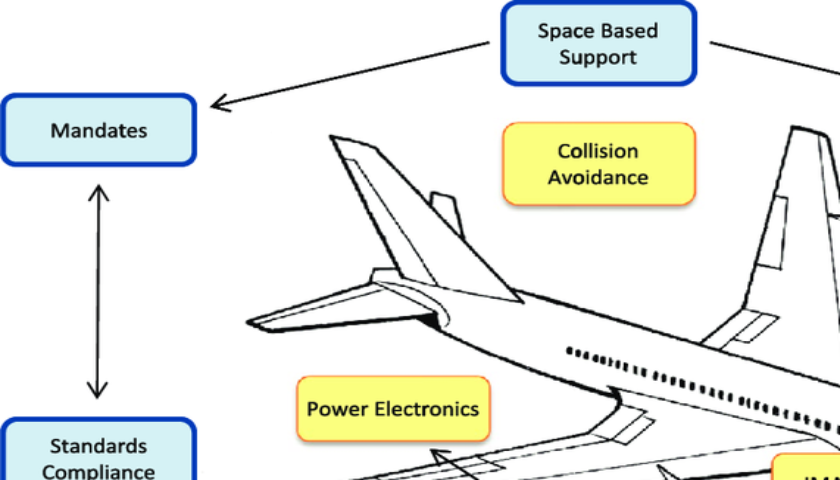I was recently asked to re-cycle PA system CB on ground by the engineering staff as the system was not working. Without giving it a second thought I did that and the system was working again. Subsequently this made me think. Is this normal? But then what about tripped CBs?
What are circuit breakers?
- The single most “proliferated” item of the electrical system in a modern cockpit is the circuit breaker.
- These round black heads line the cockpit’s walls and ceiling. AC or DC, ganged, multi- or single-pole, they control, monitor, and protect everything electrical and electronic, from the lowliest indicator to whole busses, relays, and load centers.
- An essential feature in electrical systems since the beginning of the Electrical Age, these phalanxes of breakers mark an airplane’s first line of defense against electrical fires and systemic meltdowns.
- The majority of Circuit Protection Devices used in aerospace applications are the resettable thermal CB type developed as a replacement for fuses.
- CBs protect wire and cable from damage owing to an over-current condition. They successfully protect the circuit when the temperature and time duration characteristics of the over-current condition are outside the CB’s design limits. When the heat exceeds a preset amount, the bimetallic element bends causing the spring-loaded contact to trip and open the circuit. The design is known as a “trip-free” CB in that it cannot be reset in the presence of an over-current condition. After a predetermined interval for cooling, the CB is capable of being manually reset.
- However, CB does not provide protection against some conditions like ‘tricking fault’ and ‘arcing’.
Circuit Breaker Reset Philosophy
Inconsistencies exist within the aviation industry regarding CB reset philosophies, which have resulted in the evolution of inappropriate CB reset practices. For example, there is a widely held view among flight crew and maintenance personnel that one reset of any tripped CB is acceptable. Consequently, often the first step in troubleshooting a tripped CB is a reset attempt.
There is also a view that the reset of a low ampere CB is less dangerous than the reset of a higher ampere CB. However, while the consequences of resetting a low ampere CB may be less pronounced, under the correct conditions an arcing event involving a low ampere circuit could lead to a fire. Since it is impossible to know whether these conditions exist in any given situation, a tripped CB should not be reset before any associated fault is located and eliminated.
When a CB trips, reset at your peril.
Always remember power feeds fire. There is always danger in resetting CBs (circuit breakers) tripped by an unknown cause, because the tripped condition is a signal that something may be wrong in the related circuit,
On the other hand, the FAA recommends that all AFMs should contain guidance that states the following “‘The crew should make only one attempt to restore an automatically-disconnected power source or reset or replace an automatically-disconnected CPD that affects flight operations or safety.”
Precisely what action is expected from this statement is open to interpretation. In addition, there is no regulatory requirement that the AFMs are to inform flight crews of the adverse consequences of CB resets or to state categorically that no resets are allowed except for a single reset of those systems deemed by the pilot-in-command to be flight essential.
I would always recommend special caution when resetting a CB. It should never be reset in flight unless deemed necessary for further flight and landing.
A reset should only be done after consulting the relevant documentary resources e.g. the quick reference handbook (QRH), the minimum equipment list (MEL), the aircraft flight manual (AFM), the company operations manual and/or maintenance manuals.
Only one reset should be attempted.
Above all never reset CB related to fuel pump and fuel indication system.
CB Panel Location
CB Panels are located on the walls and ceiling of the flight deck where they are not easily accessible to crew members. As part of the checklist, while entering the flight deck crew ensure that all CBs are ‘in’ and secure. Over the years, the CB panel location has not changed though the instrumentation and display system has seen tremendous advancement. In a way, this has helped in keeping the CB out of the reach and possible finger trouble to a certain extent.
During certain emergencies like autopilot misbehavior/failure or trim runaway, pilots are required to pull out CB as per QRH or AFM. While in some other cases pilots may be required to recycle the CB to reboot the system during flight as per QRH, MEL, or AFM. The crew should be aware of their position and location but resetting or pulling out CB may still pose a substantial challenge while controlling the aircraft close to the ground or by night.
I strongly advocate that CBs which are required to be operated during the flight should be separately grouped and conveniently located in an accessible place.
A regulatory mandate for prohibiting resetting CB or relocation of CB panel is strongly recommended.
Be safe. Happy landing.



